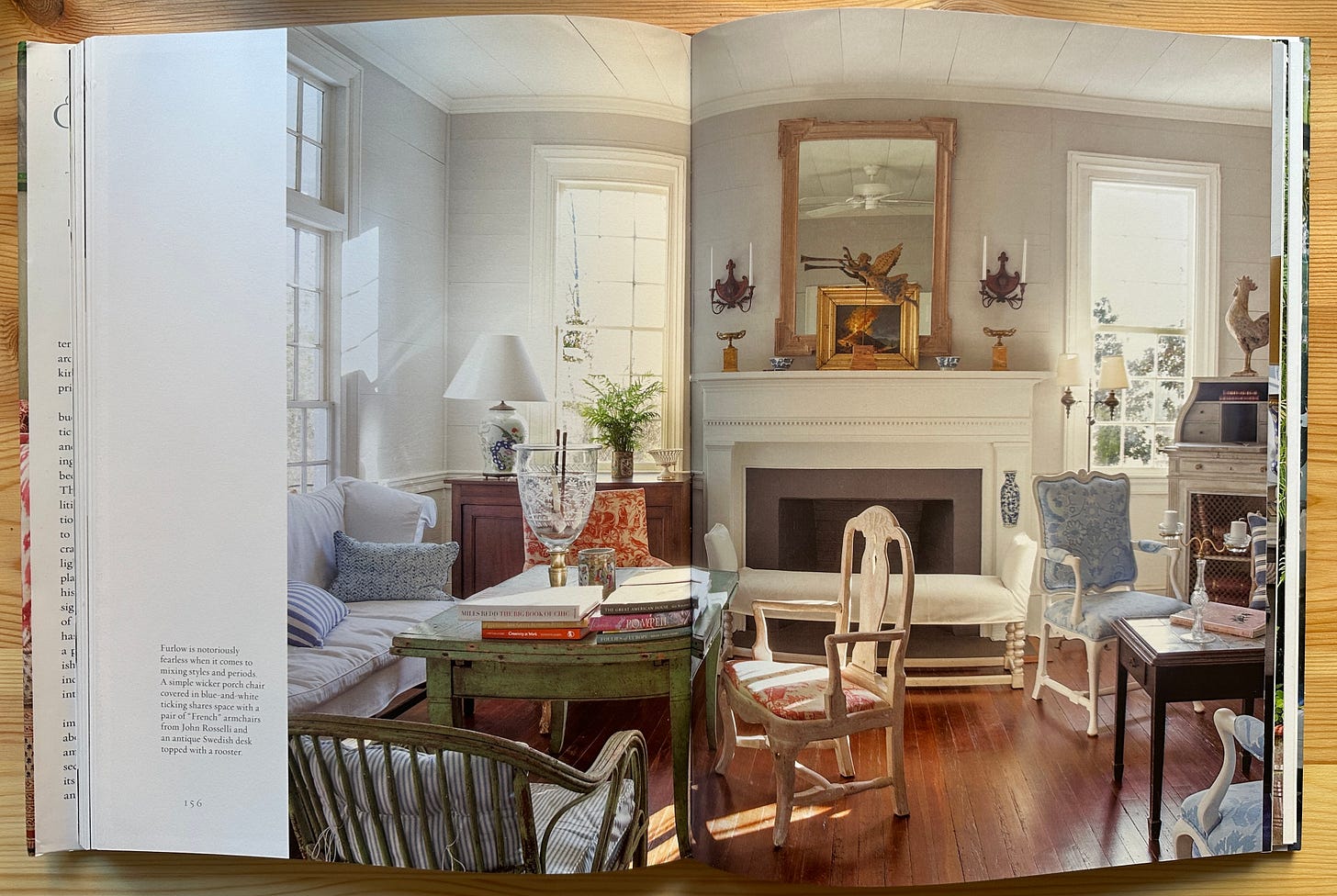Hello! Welcome to the first official edition of Singular.
Over the holidays I was starkly reminded of the difference between a home and a place where someone lives. My in-laws, who were visiting from England for three weeks, rented an apartment in our building, and I say this in the most generous way, the contents were pretty generic; there to serve a practical purpose but devoid of any soul or personality. It worked just fine for their stay, almost like an Airbnb, but it was difficult for me to imagine living, like really living, in a place like that.
Creating a one-of-a-kind home — and helping others to do the same — is my lifelong mission. It’s not just that I think homes with character and warm touches are more aesthetically pleasing (and I do), but most importantly, I believe that they support the inhabitants in living a full, and meaningful, life. When you’re surrounded by what you love, your house becomes a home where you can thrive and truly make every day special.
Many would agree with this aspiration but might not feel equipped to achieve it, or think it’s only possible with an interior decorator and a big budget, or being an artist themself. That’s one way, for sure, but not the only way. Anyone is capable of creating a Singular home with time, patience, creativity, and ingenuity, and I’m going to show you how.
I’ve spent January revisiting some of my favorite creatives and interior inspirations. For as long as I can remember, I’ve gifted my mom a ‘Christmas book’, generally a gardening or interior coffee table book, that she would devour in the gloomy winter days. I’ve now adopted that tradition, and this year’s books offered a visual feast and wealth of design wisdom.
Reading and immersing oneself in the worlds of truly creative people is, in my opinion, the best way to learn and train your eye. Their homes have come together through a lifetime of experimenting and collecting. It’s a reminder to me that homes that are professionally decorated in a year are the exception, not the rule. I actually find the prospect of a lifelong creative project exciting; I mean, how boring in a way for it all to be figured out. I don’t know about you, but I live for the chase, the fact that a discovery of something I didn’t expect could be lurking around the corner. As well, I love the idea of my home being my life’s work.


Another realization I find comforting: some of the best designers are self-taught, and they aren’t pretentious — their work is underscored by creativity and originality, and by taste. Because they trust their eye and think outside the box, they can pair something high end with something inexpensive or upcycle a promising piece of furniture with a lick of paint. They aren’t rule followers, and that liberates them to come up with unexpected combinations or details. A great many of them had a background in antiques and collecting, and while that might sound highfalutin, I’m talking about trekking to far-flung places and picking up bits in markets, or stopping by junk sales and strapping pieces on the top of their car.
The point is, anyone can have an individual, cozy, interesting home no matter how much money you have or whatever your circumstance (including renters like me). I feel passionately about this point, it is the essence of Sense of Spencer.
So, I thought I would share with you what I’ve learned from these creative people. This feels like a good a place as any to kick off Singular.
Design lessons that I’ve taken to heart and put into practice
Educate your eye and look for the very best of everything. Be curious, seek out beauty, learn what’s good out there, study the history of things you’re interested in. Travel, if you can travel, read books, watch movies with majestic settings, go on house tours, take courses from creative experts. Informed by your findings, buy one really exceptional thing instead of five mediocre things.
Do not be afraid to mix styles. Only purchase what you really, truly love without an eye toward period or what matches another piece. It takes some courage, but the beauty is in mixing them. American furniture can live next to French with an Italian chandelier. YOLO.
Start a collection and add to it across your lifetime. Displaying a collection is one of the easiest ways to add interest and character without a lot of mixing and matching required. Choose something that you really love and that’s rare and exquisite and display it on your tabletops, shelves, walls. The thrill of the chase will give you a sense of purpose, and the ever-growing collection will tell a rich story in your home.
Keep it simple. Then add loads of visual interest. It can be daunting to commit to things like paint, wallpaper, rugs. What if I told you, you could still have an interesting home choosing white walls and simple floor coverings, like sisal or Indian dhurries. They offer a neutral backdrop on which to layer architectural elements, decorative objects, art, etc — these details offer heaps of character and afford you the luxury of adding them over time.
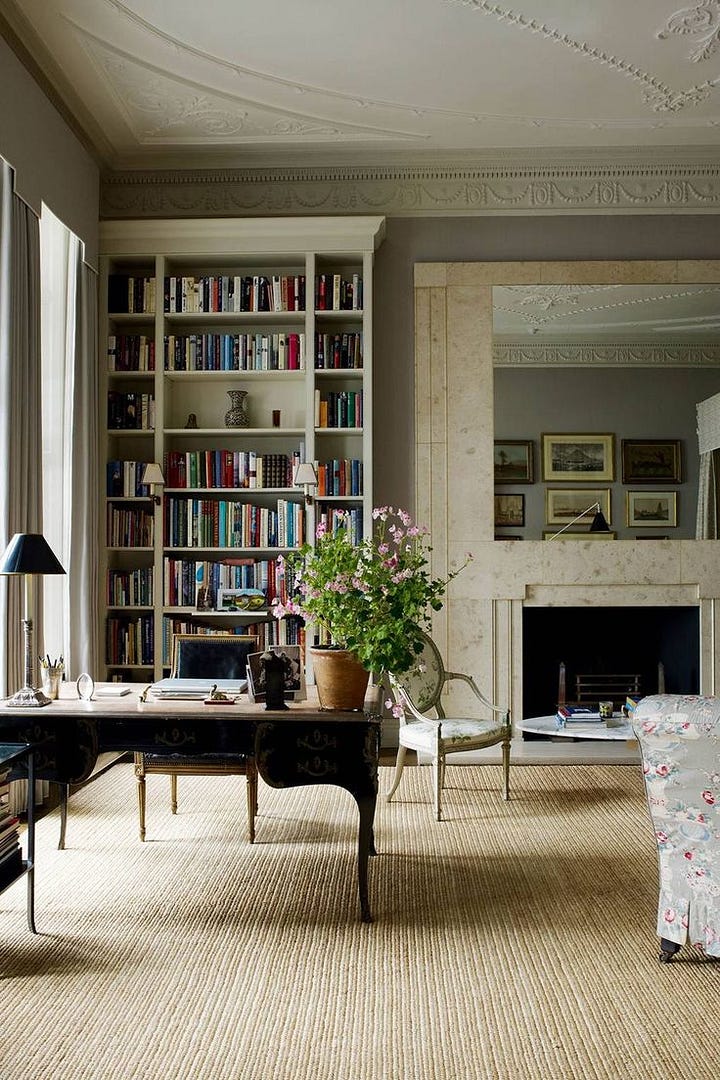
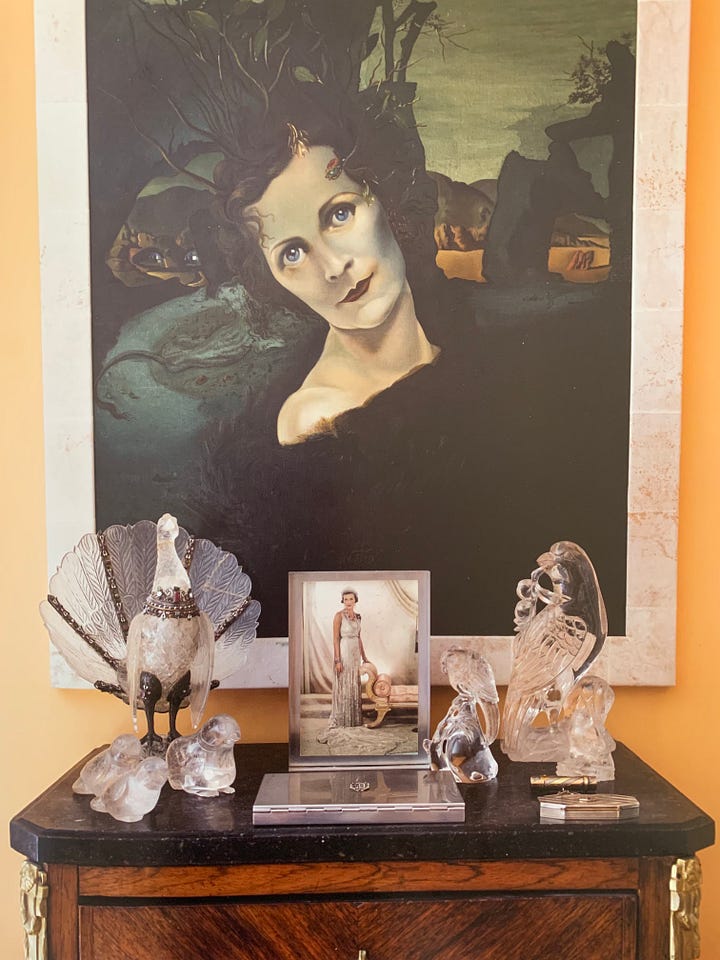
Left: Veere Grenney uses rush matting throughout his designs. Right: a collection by David Hicks Go for the unexpected. The unique pieces or pairings really do make all the difference in terms of delivering soul, warmth, and personality. Look for furniture with an interesting detail, like a carved shell or hoofed feet. Create combinations that aren’t boring or obvious, like an elegant toile covered bed paired with a faded striped dhurrie.
Be original. Avoid cliches and samesies. There’s always going to be a trending, must-have thing, but try to put your blinders on and center on what YOU find interesting. Maybe Ginori or Royal Copenhagen is the most coveted china of the moment, but I’m personally more riveted by the white-and-peach service of Old Paris Furlow Gatewood collected or the Red Aves pattern my mom registered for. What about you?


Left: Furlow's Old Paris service. Right: A dhurrie paired with an American quilt at Gateswood's home You don’t have to spend a fortune on fabric. Forgo curtains and stick with shutters or blinds (gasp!). Cover big pieces, like sofas and upholstered chairs, with white cotton duck. Save the expensive fabric for accent chairs and pillow covers. And/or make use of vintage fabrics or repurpose Indian textiles or really anything – one creative said he could make a nice pillow out of a dish towel. See, resourceful.
Even practical things should be beautiful. Nothing is a bigger eye sore than an ugly conventional piece amongst many beautiful ones. Instead, look for vintage/antique furniture that can double as storage; put in skirted tables that conceal stuff underneath (or like me, make your own by placing a textile over a console table); if you’re DIY-inclined create attractive storage solutions, like the octagonal columns that Furlow Gateswood fashioned as cabinets.
Sprinkle details like around a home like Easter eggs. An important aspect of ‘styling’ (though I’m loath to call it that because that makes it sound contrived, and it is the opposite of that, completely carefree and organic) is placing treasures in unexpected spots — for example, place a bird figurine in a door pediment (or paint one above a door) or porcelain plates glued onto a mantlepiece. Think of them as little visual delights.
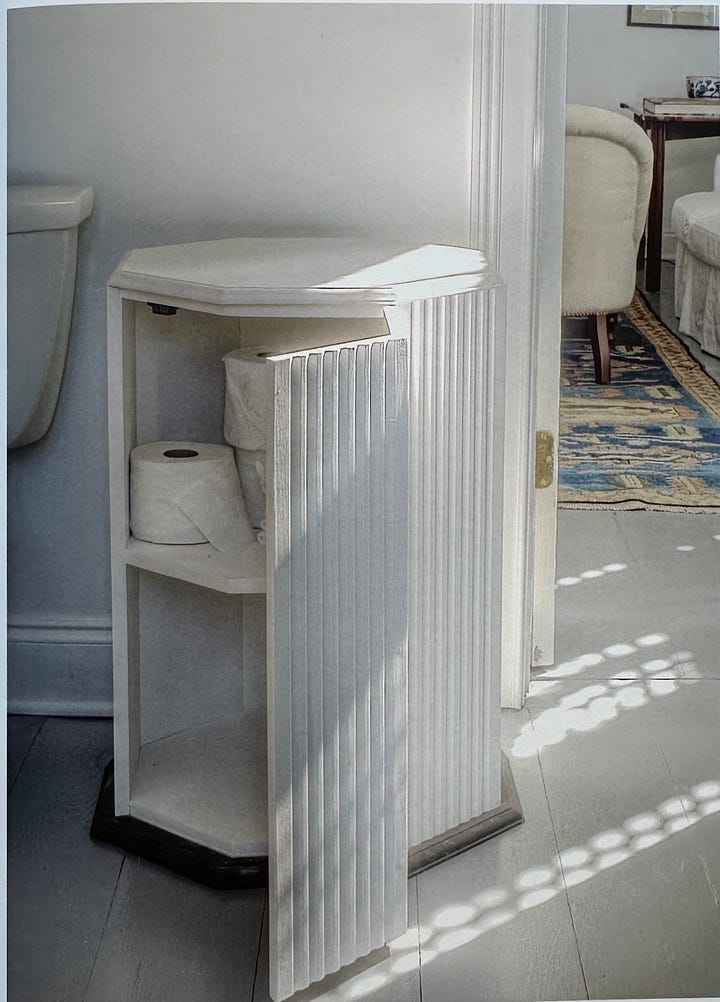
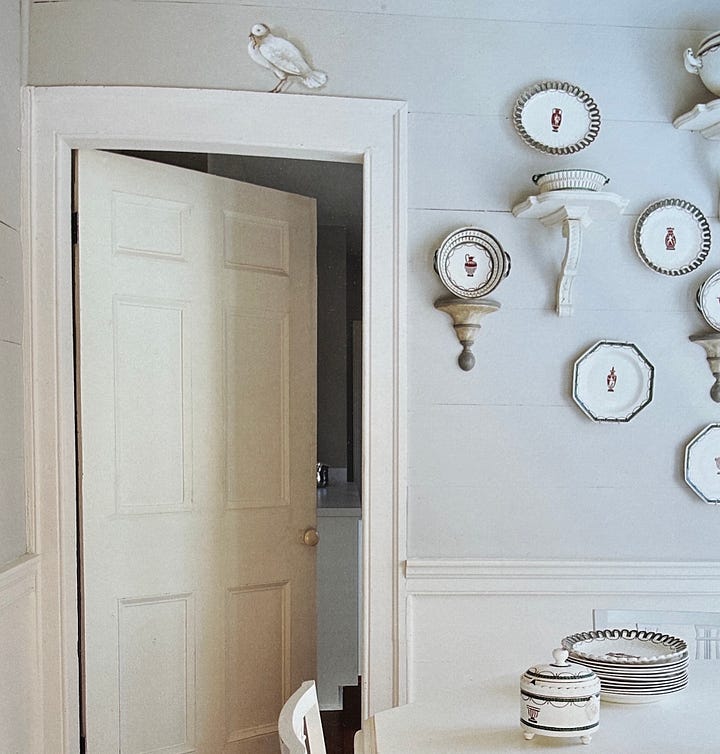
Left: Furlow's clever column storage. Right: A trompe l'oeil bird above a doorframe Comfort is key. A home is meant to support the way you live, and for most of us, that means having a place to relax and find comfort. Your home could be filled with the most incredible antique or custom pieces, and if there is nowhere comfortable to sit and relax, what is the point? And for the record, you don’t have to choose between comfort and beauty, they’re not mutually exclusive.
Little design ideas I’m filing away
Gingham is a more versatile pattern than you’d think — mix big and small scale gingham on two pieces of furniture in a space; use gingham to finish a chair back (with a complementary fabric for the seat); or add a gingham throw pillow to almost any grouping
Create interesting combinations of wall decor with varying sized frames, decorative objects, and brackets to lend architectural detail and bring the eye up
Or create an entire wall installation out of symmetrical arrangements of brackets displaying plates and platters
Install narrow shelves to display a collection of china pieces (bonus: add wooden paddles to include pitchers)
Painted floors are chic chic chic; bonus hire a decorative painter to create a trompe l'oeil design (this is where my big bucks budget would go)
Include a pull out table beneath built-in bookshelves
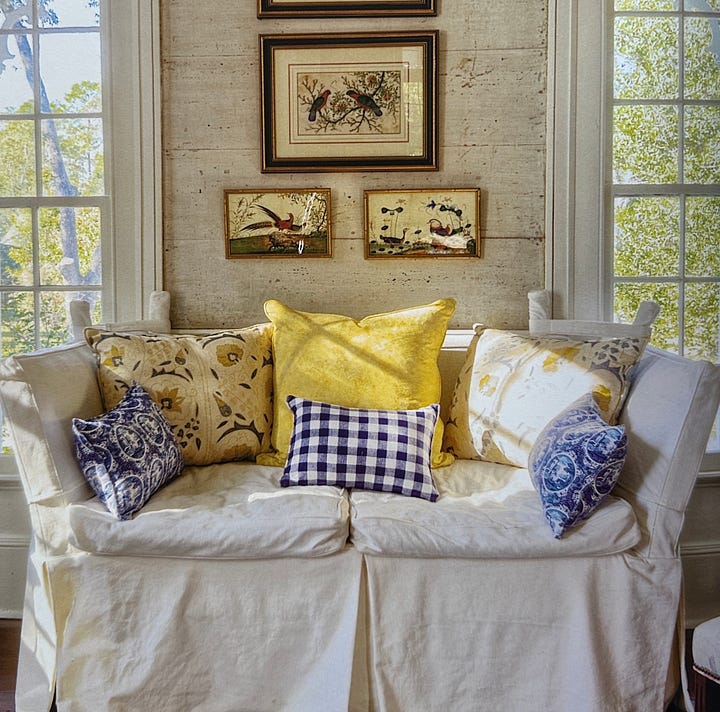
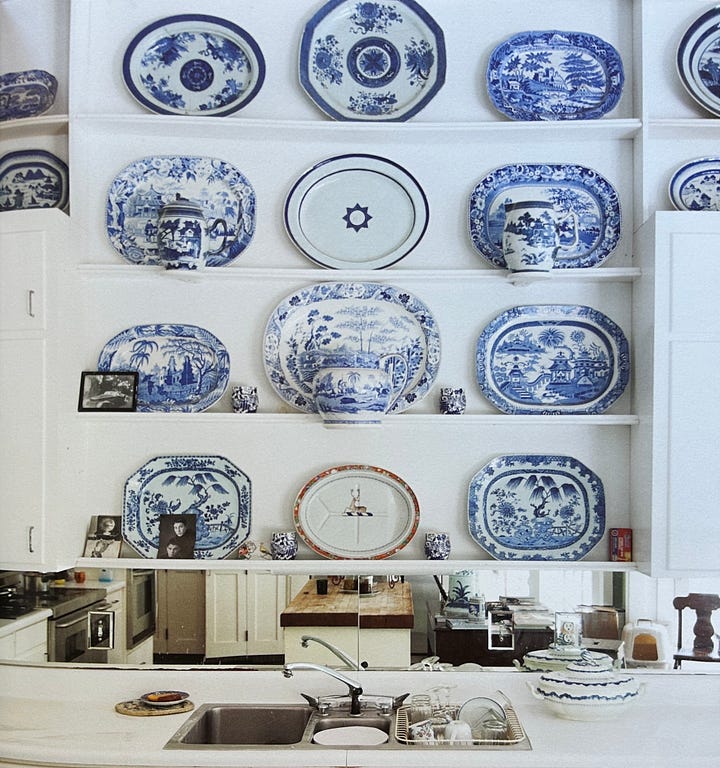
Photo credits: One Man’s Folly: The Homes of Furlow Gateswood; India Hicks: A Slice of England; Veere Grenney: A Point of View on Decorating; Nicky Haslam’s Folly de Grandeur
When on the topic of home, it is impossible not to think about people in LA who have lost theirs. I ask you to join me in making a donation to help them rebuild – here’s a comprehensive list of GoFundMe pages. Every bit counts.




